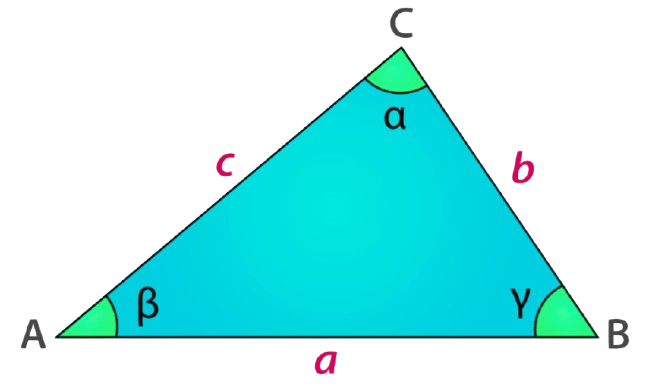
Triangle Inequality Theorem Calculator
Triangle Inequality Theorem Calculator is a free, user-friendly, and advanced online tool designed to quickly determine whether three given side lengths can form a valid triangle. Based on the Triangle Inequality Theorem, the calculator checks that the sum of any two sides is greater than the third side.
Simply input values for Side a, Side b, and Side c, select your unit (e.g., meters), and click Calculate. The tool will immediately evaluate all three conditions:
- a + b > c
- b + c > a
- c + a > b
If all conditions are satisfied, it confirms that a triangle can be formed. If not, it will indicate that the given sides do not meet the necessary criteria.
Perfect for students, educators, or anyone working with triangle geometry, this calculator ensures fast and accurate verification with step-by-step logic displayed for transparency.
How to Use the Triangle Inequality Theorem Calculator
Follow these simple steps to determine if three side lengths can form a triangle:
1. Enter Side Lengths: Input the values for Side a, Side b, and Side c into the respective fields. You can use any positive numerical values (e.g., 4, 5, 6).
2. Select Units (Optional): Choose the desired unit of measurement from the dropdown menu (e.g., meter, centimeter, inch). This step is optional and does not affect the result but helps keep your work consistent.
3. Click “Calculate”: Press the Calculate button to check if the entered sides satisfy the Triangle Inequality Theorem.
4. View the Result: The calculator will instantly show whether the sides can or cannot form a triangle based on the following checks:
- a + b > c
- b + c > a
- c + a > b
5. Check the Calculation Steps (Optional): For full transparency, click “Show Steps” to see the detailed breakdown of how the conditions were evaluated.
6. Reset (If Needed): Click the Reset button to clear all inputs and start a new calculation.

Triangle Inequality Theorem Calculator
What is a Triangle Inequality Theorem?
The Triangle Inequality Theorem is a fundamental principle in Euclidean geometry that provides the necessary condition for three line segments to form a triangle. It focuses on the relationship between the lengths of the sides of a triangle.
For any triangle, the sum of the lengths of any two sides must always be greater than the length of the third side.
This rule must be satisfied for all three combinations of the sides:
- Side a + Side b > Side c
- Side b + Side c > Side a
- Side c + Side a > Side b
If any one of these conditions fails, the three sides cannot form a triangle.
Real-World Applications
The Triangle Inequality Theorem is used in:
- Engineering and construction (ensuring physical structures form closed triangles)
- Navigation and surveying (calculating possible paths)
- Computer graphics (mesh geometry and shape validation)
- Mathematics and proofs (geometry, trigonometry, and vector analysis)
Why Does the Triangle Inequality Theorem Matter?
This theorem is not just a rule — it’s a test of possibility. It’s used to:
- Verify if three given side lengths can form a triangle before applying further geometric formulas (like the Pythagorean theorem or Heron’s formula).
- Prevent errors in construction, design, and modeling where triangle shapes are needed.
- Support real-world applications like navigation, surveying, engineering, architecture, and more.
Valid Triangle Example
Let’s take side lengths:
a = 5, b = 7, c = 10
Check the three conditions:
- 5 + 7 = 12 > 10 ✔️
- 7 + 10 = 17 > 5 ✔️
- 10 + 5 = 15 > 7 ✔️
✔️ All conditions are satisfied → These sides can form a triangle.
Invalid Triangle Example
Now try:
a = 3, b = 4, c = 8
Check the three conditions:
- 3 + 4 = 7
One condition fails → These sides cannot form a triangle.
Frequently Asked Questions on Triangle Inequality Theorem Calculator
1. What does the Triangle Inequality Theorem Calculator do?
The calculator checks whether three given side lengths can form a triangle by applying the Triangle Inequality Theorem. It evaluates if the sum of any two sides is greater than the third side.
2. What inputs do I need to use this calculator?
You need to enter three positive numbers representing the lengths of the triangle’s sides — labeled as Side a, Side b, and Side c.
3. What happens if the side lengths do not satisfy the Triangle Inequality Theorem?
If even one of the three conditions is not met, the calculator will display that the side lengths cannot form a triangle and show which condition failed.
4. Why is the Triangle Inequality Theorem important?
It ensures the side lengths provided can physically connect to form a triangle. Without satisfying this theorem, the points will not enclose an area and thus cannot form a triangle.
5. Does the calculator show calculation steps?
Yes! You can click on “Show Steps” to view a clear breakdown of how each inequality was evaluated, making it perfect for students and teachers.
Final Thoughts: The Triangle Inequality Theorem Calculator is a inline tool that help you quickly determine whether three side lengths can form a valid triangle. Eliminate guesswork and confidently validate triangle side lengths in seconds—only on CalculationClub.com.
My Request to All: If you enjoy using my Triangle Inequality Theorem Calculator and my website, please consider sharing the link to this page or the website with your friends. Additionally, if you have any requests, complaints, suggestions, or feedback, feel free to reach out via our WhatsApp channel or Telegram group.
Telegram Link – Join Our Telegram Channel
YouTube Link – Subscribe to Our YouTube Channel
For more tools, please visit our homepage at CalculationClub – Free Online Calculators
For additional tools in Hindi, you can visit MeterToFeet
Thank you for your support!


